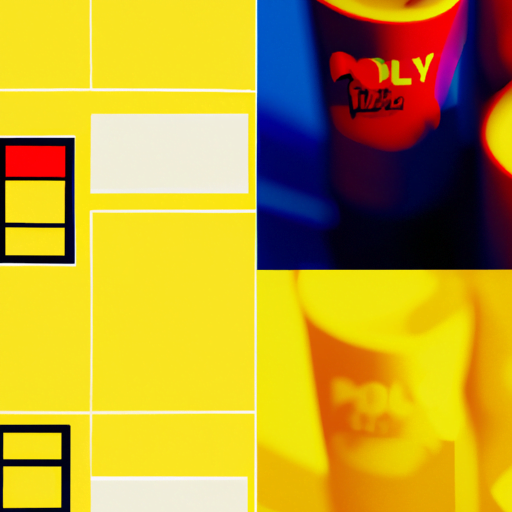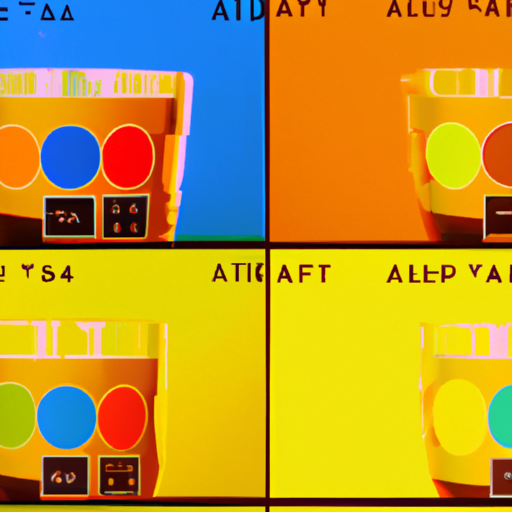
-
Table of Contents
- Exploring the Art of Color Grading in Graphic Design
- The Importance of Color Grading
- Techniques for Color Grading
- 1. Color Balance
- 2. Contrast Adjustment
- 3. Saturation Control
- 4. Selective Color Grading
- Case Studies: Effective Color Grading in Graphic Design
- 1. Apple’s Product Packaging
- 2. Movie Posters
- The Impact of Color Grading
- Summary
Exploring the Art of Color Grading in Graphic Design

Color is a powerful tool in graphic design. It has the ability to evoke emotions, convey messages, and create visual impact. One technique that harnesses the power of color is color grading. In this article, we will delve into the art of color grading in graphic design, exploring its importance, techniques, and impact on the overall design.
The Importance of Color Grading
Color grading is the process of enhancing or altering the color of an image or design to achieve a desired aesthetic or mood. It involves adjusting the brightness, contrast, saturation, and hue of colors to create a cohesive and visually appealing composition. Here are some reasons why color grading is important in graphic design:
- Setting the Mood: Color grading allows designers to set the mood and tone of their designs. By manipulating colors, designers can create a specific atmosphere, whether it’s a warm and inviting feeling or a cool and mysterious ambiance.
- Creating Visual Hierarchy: Color grading can be used to establish a visual hierarchy within a design. By emphasizing certain colors or tonal ranges, designers can guide the viewer’s attention and highlight important elements.
- Enhancing Brand Identity: Consistent color grading can help reinforce a brand’s identity. By using a specific color palette or grading style across various designs, a brand can establish a recognizable and cohesive visual language.
- Adding Depth and Dimension: Color grading can add depth and dimension to flat designs. By carefully manipulating colors, designers can create the illusion of depth, making the design more visually engaging.
Techniques for Color Grading
Color grading involves a variety of techniques and tools. Here are some commonly used techniques in color grading:
1. Color Balance
Color balance involves adjusting the overall mixture of colors in an image or design. It allows designers to correct any color casts and achieve a desired color temperature. For example, increasing the amount of warm tones can create a cozy and inviting atmosphere, while adding cool tones can evoke a sense of calmness.
2. Contrast Adjustment
Contrast adjustment involves manipulating the difference between light and dark areas in an image or design. By increasing the contrast, designers can make the colors appear more vibrant and the design more dynamic. Conversely, reducing the contrast can create a softer and more subdued look.
3. Saturation Control
Saturation control allows designers to adjust the intensity or purity of colors. Increasing the saturation can make the colors more vibrant and eye-catching, while decreasing it can create a more muted and subtle effect. Saturation control is particularly useful when designers want to emphasize certain elements or create a specific mood.
4. Selective Color Grading
Selective color grading involves targeting specific colors or tonal ranges within an image or design. By adjusting the color properties of only certain elements, designers can create focal points and draw attention to specific areas. This technique is often used to highlight important elements or create a sense of visual interest.
Case Studies: Effective Color Grading in Graphic Design
Let’s explore some real-world examples of effective color grading in graphic design:
1. Apple’s Product Packaging
Apple is known for its sleek and minimalist product packaging. One of the key elements that contribute to the overall aesthetic is the color grading. Apple often uses a desaturated color palette with subtle shifts in hue to create a sophisticated and premium look. The color grading enhances the product’s visual appeal and reinforces the brand’s identity.
2. Movie Posters
Movie posters are a great example of how color grading can set the mood and tone of a design. Action movies often use high contrast and vibrant colors to create a sense of excitement and energy, while horror movies tend to employ desaturated and cooler tones to evoke a sense of suspense and fear. The color grading in movie posters plays a crucial role in capturing the essence of the film and attracting the target audience.
The Impact of Color Grading
Color grading has a significant impact on the overall design. Here are some ways in which color grading can influence the viewer’s perception:
- Emotional Response: Colors have the power to evoke emotions. By carefully selecting and grading colors, designers can elicit specific emotional responses from the viewers. Warm colors like red and orange can create a sense of excitement or passion, while cool colors like blue and green can evoke calmness or tranquility.
- Brand Recognition: Consistent color grading can help establish a strong brand identity. When viewers consistently encounter a specific color palette or grading style associated with a brand, they begin to associate those colors with the brand itself. This can lead to increased brand recognition and recall.
- Visual Cohesion: Color grading can bring together disparate elements within a design, creating a sense of visual cohesion. By applying a consistent grading style to various elements, designers can unify the design and make it more visually appealing.
- Attention and Focus: Color grading can guide the viewer’s attention and highlight important elements within a design. By using contrasting colors or selectively grading specific areas, designers can create focal points and draw attention to key information or calls to action.
Summary
Color grading is a powerful technique in graphic design that allows designers to manipulate colors to achieve a desired aesthetic, set the mood, and create visual impact. By adjusting the color balance, contrast, saturation, and selectively grading specific elements, designers can enhance the overall composition and evoke specific emotional responses from viewers. Effective color grading can contribute to brand recognition, visual cohesion, and attention-grabbing designs. Understanding the art of color grading is essential for graphic designers looking to create visually appealing and impactful designs.
